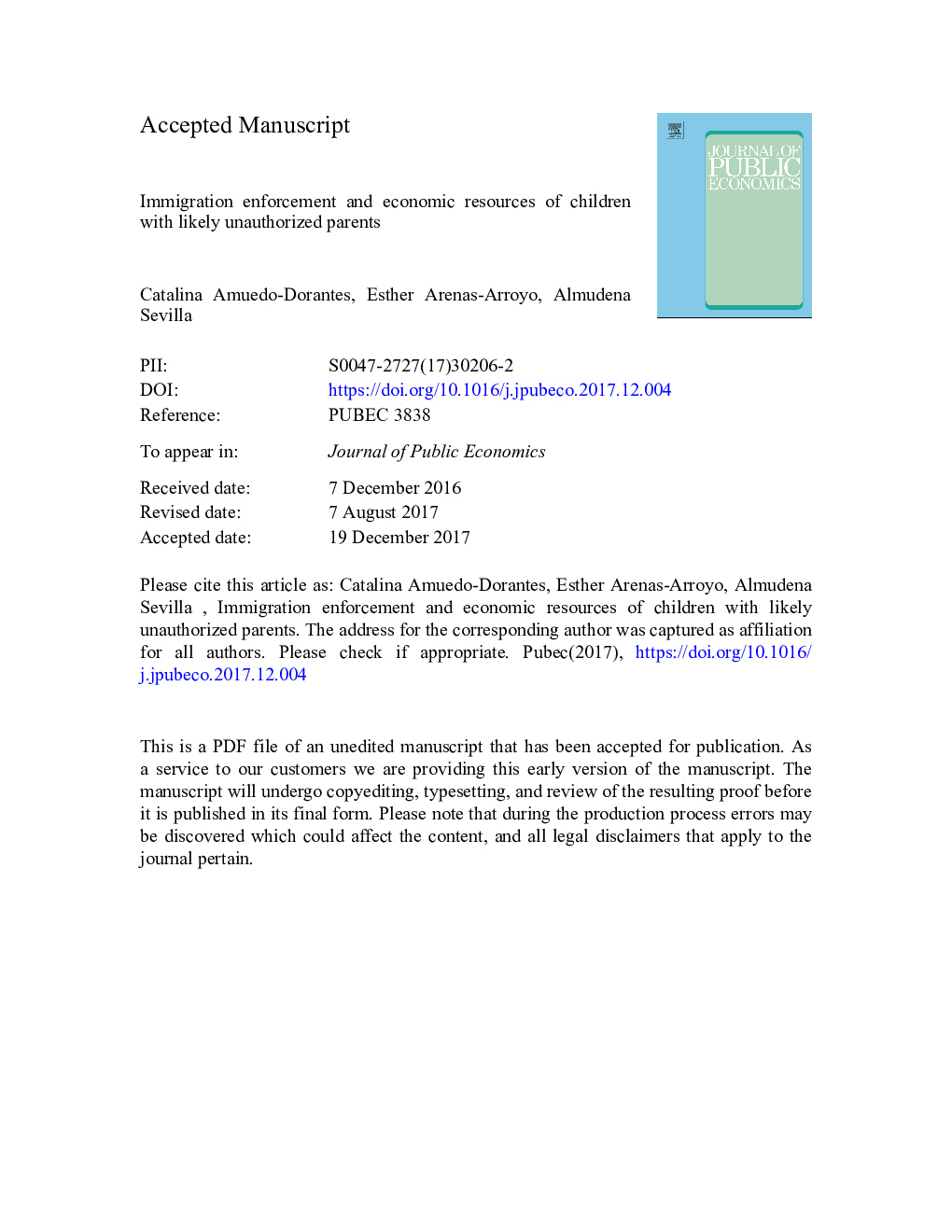| Article ID | Journal | Published Year | Pages | File Type |
|---|---|---|---|---|
| 7369579 | Journal of Public Economics | 2018 | 58 Pages |
Abstract
Over the past two decades immigration enforcement has grown exponentially in the United States. Using data from the 2005 through 2011 American Community Survey, we exploit the geographical and temporal variation in a novel index of the intensity of immigration enforcement to show how the average yearly increase in interior immigration enforcement over that period raised the likelihood of living in poverty of households with U.S. born children by 4%. The effect is robust to a number of identification tests accounting for the potential endogeneity of enforcement policies and residential location of immigrants, and is primarily driven by police-based immigration enforcement measures adopted at the local level, such as 287(g) agreements.
Keywords
Related Topics
Social Sciences and Humanities
Economics, Econometrics and Finance
Economics and Econometrics
Authors
Catalina Amuedo-Dorantes, Esther Arenas-Arroyo, Almudena Sevilla,
